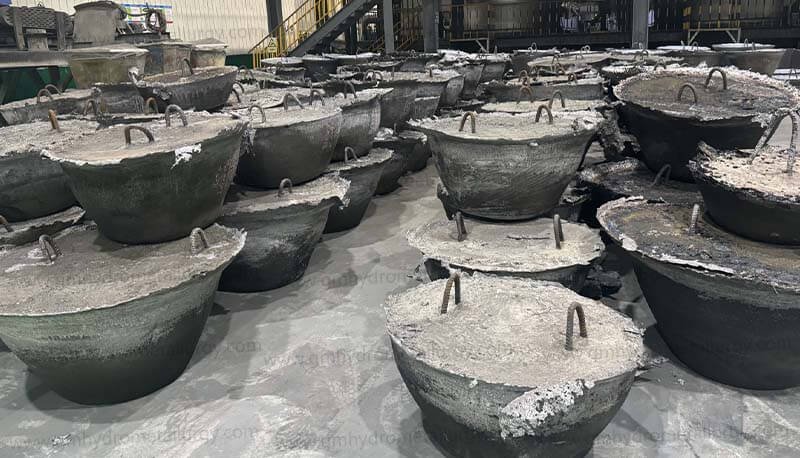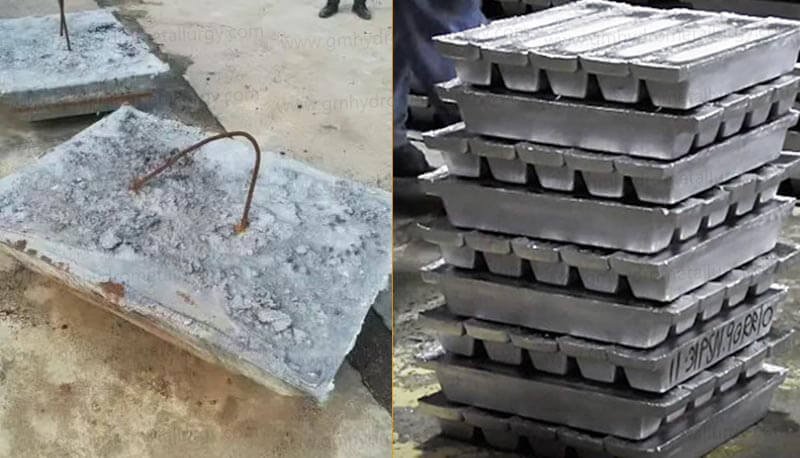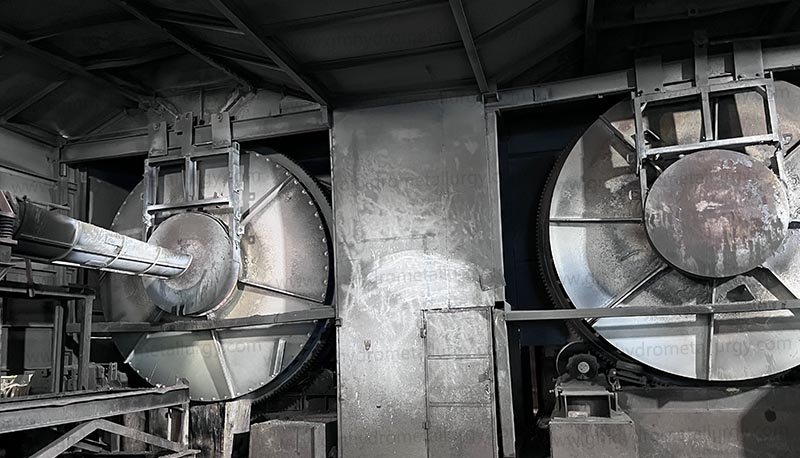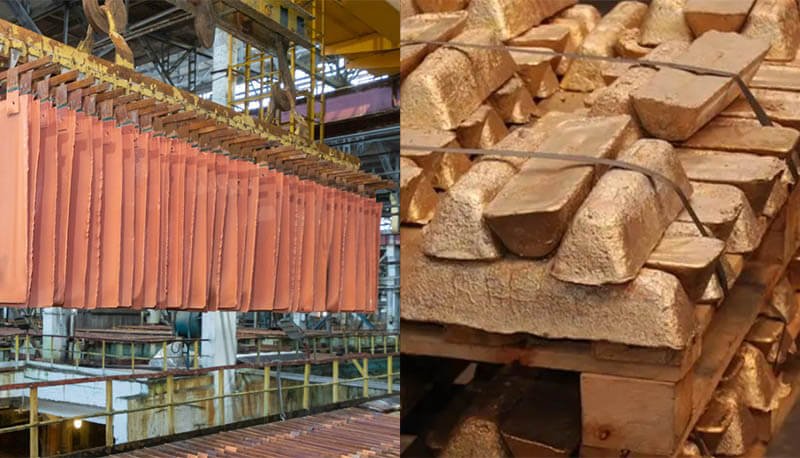Lead smelting process
Lead smelting process is the essential metallurgical operation transforming lead-bearing materials – primarily ores (like galena) or recycled scrap – into pure, usable lead metal. Whether you’re a mining company, a battery recycler, or an industrial user sourcing lead, understanding this complex, high-temperature process is crucial for evaluating efficiency, environmental impact, and the quality of your final product.
Core Objective
To chemically reduce lead compounds (mainly lead sulfide – PbS in ore, or lead sulfate/carbonate/oxide in scrap) into metallic lead (Pb), separating it from impurities like sulfur, iron, zinc, copper, arsenic, antimony, and precious metals.
Two Main Pathways: Primary vs. Secondary Smelting
1. Primary Lead Smelting (From Ore)
Concentration
Mined galena (PbS) ore is crushed, ground, and beneficiated (usually by froth flotation) to increase lead content (typically to 60-80% Pb) and remove gangue minerals.
Sintering (Crucial for Sulfide Ores)
The concentrated ore (sinter feed) is mixed with fluxes (like limestone/silica) and recycled plant returns. Here, the feed is ignited on a moving grate. Key Reaction: `2PbS + 3O₂ → 2PbO + 2SO₂`. This converts PbS to PbO (lead oxide) and agglomerates the fine material into a hard, porous “sinter” suitable for the blast furnace. SO₂ off-gas is captured for sulfuric acid production.
Blast Furnace Smelting
Sinter, coke (fuel/reducing agent), and additional fluxes are charged into the top of a lead blast furnace (similar to iron smelting but smaller). Preheated air (blast) is blown in near the bottom.
Reduction
Coke carbon (C) reduces PbO to molten lead: `PbO + C → Pb + CO` and `PbO + CO → Pb + CO₂`.
Reactions
Complex reactions melt fluxes, forming slag (primarily FeO-SiO₂-CaO) that dissolves impurities. Sulfur reports to matte (FeS) or speiss (arsenides/antimonides). Precious metals (Au, Ag) dissolve into the lead.
Outputs
Molten lead (bullion) sinks to the bottom. Slag floats above. Matte/speiss form intermediate layers. These are tapped separately.
Refining
The crude lead bullion contains significant impurities (Cu, As, Sb, Sn, Ag, Au, Bi). It undergoes multi-stage refining:
Drossing/Copper Removal
Molten bullion is cooled slightly. Copper and other impurities solidify and form a dross skimmed off.
Softening (Desilverizing)
Primarily removes arsenic, antimony, and tin via oxidation (air stirring) or adding reagents (e.g., NaOH), forming drosses.
Desilvering
Silver (and gold) are removed, traditionally by the Parkes Process (adding zinc to form Ag-Zn crusts) or electrolytically (Betts Process).
Final Refining
Bismuth is removed via the electrolysis refining process. The result is >99.97% pure refined lead.
2. Secondary Lead Smelting (From Scrap – Dominant Source)
Feedstock Prep
Used lead-acid batteries (ULABs) are the primary source. They are crushed/hammer-milled, separated (polypropylene casings, separators, sulfuric acid), leaving “battery paste” (PbSO₄, PbO₂, PbO, metallic Pb fines) and lead grids.
Smelting/Reduction
The paste and metallic fractions are smelted in furnaces designed for efficient reduction of oxides/sulfates:
Rotary Kilns
Widely used. Paste is mixed with reductants (coke, coal) and fluxes (soda ash – Na₂CO₃, iron). Key Reactions: `2PbSO₄ + 2Na₂CO₃ → 2PbO + 2Na₂SO₄ + 2CO₂` then `2PbO + C → 2Pb + CO₂`. Soda ash converts sulfate to oxide and forms a sodium sulfate slag.
Blast Furnaces
Can handle large volumes of metallic scrap and paste.
Short Rotary Furnaces (SRF)
Common, versatile, batch operation.
Refining
Similar to primary refining but often less complex. Key focus is removing antimony (for soft lead) or controlling it (for hard lead alloys). Desulfurization (using NaOH or Na₂CO₃) is often needed for secondary bullion.
Critical Considerations for Modern Lead Smelters
Sulfur Capture
SO₂ emissions from sulfide roasting/smelting must be captured. Modern plants achieve >99% capture via efficient acid plants producing sulfuric acid (H₂SO₄).
Dust & Fume Control
Lead dust is highly toxic. Sophisticated baghouse filters (fabric filters) are essential for all furnace off-gases.
Slag Management
Slag contains residual lead and must be treated (often via fuming) or disposed of safely in engineered landfills. Slag composition control minimizes lead losses.
Energy Efficiency
Modern furnaces and waste heat recovery systems significantly reduce energy consumption.
Feed Flexibility
Especially crucial for secondary smelters handling variable scrap compositions.
Metal Recovery
Maximizing lead yield and recovering valuable by-products (like silver, antimony, sulfur as acid) is vital for economics.
Partnering for Smelting Success
Optimizing your lead smelting process requires robust, reliable equipment and deep metallurgical expertise. Guanma Machinery provides advanced smelting solutions tailored for both primary and secondary production:
High-Efficiency Furnaces
Rotary Kilns, Short Rotary Furnaces, ISASMELT/TSL Technology.
Comprehensive Emission Control Systems
High-performance baghouses, acid plants, fugitive dust capture.
Material Handling & Preparation
Crushing, separation, mixing, and feeding systems.
Refining Systems
Drossing kettles, softening kettles, desilvering equipment.
Process Control & Automation
Ensuring consistent quality, safety, and efficiency.
Expert Engineering & Support
From feasibility studies to commissioning and optimization.
Ready to enhance the efficiency, environmental compliance, and profitability of your lead smelting operation? Contact Guanma Machinery today for a detailed consultation and discover how our tailored solutions can transform your process.







